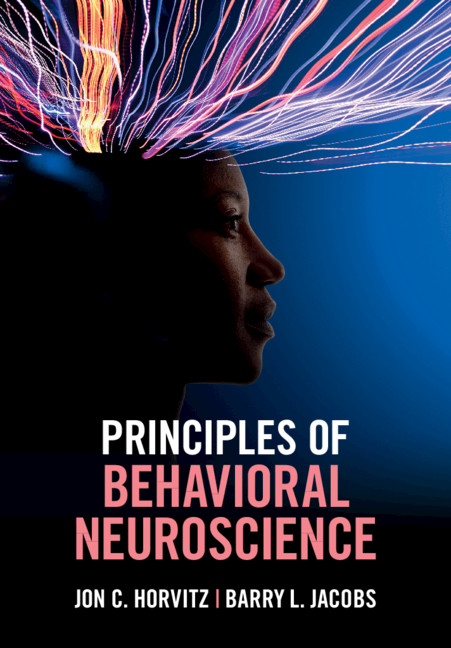Principles of Behavioral Neuroscience
Jon Horvitz and Barry Jacobs
How does brain activity give rise to sleep, dreams, learning, memory, and language? Do drugs like cocaine and heroin tap into the same neurochemical systems that evolved for life’s natural rewards? What are the powerful new tools of molecular biology that are revolutionizing neuroscience? This undergraduate textbook explores the relation between brain, mind, and behavior. It clears away the extraneous detail that so often impedes learning, and describes critical concepts step by step, in straightforward language. Rich illustrations and thought-provoking review questions further illuminate the relations between biological, behavioral, and mental phenomena. With writing that is focused and engaging, even the more challenging topics of neurotransmission and neuroplasticity become enjoyable to learn. While this textbook filters out non-critical details, it includes all key information, allowing readers to gain a grounded understanding of the topics in each chapter, from their fundamentals to their implications.
This companion website contains a Student Resources area, with answers to the chapter ‘Test Yourself’ questions, label-the figure, flashcards, links to videos and additional readings for each of the fourteen chapters.
An Instructor Resources area contains PowerPoint lecture slides, test banks, access to all figures, and an Instructor Manual for each chapter.
The Blog will provide perspectives on brain/mind material as they apply to daily life, and updates on the most relevant and interesting new findings in neuroscience research.
Reviews & endorsements
"Horvitz and Jacobs have written a comprehensive text which covers both classical and recent findings. The book is clearly written and beautifully illustrated. This will be a great undergraduate text."
"This book is for the scientifically curious, accessible to nonscientists and fascinating for all. Horvitz and Jacobs explore the science of the mind, brain, and behavior by first providing a basic understanding of how neurons work, and then cleverly illustrate functions of the nervous system – how they relate to daily life, and how they are altered in neurodevelopmental, neuropsychiatric, and neurodegenerative disorders."
"This textbook achieves the remarkable feat of bridging the brain, mind, and behavior from animals to humans to patients in a way that is comprehensive, offering a clear understanding of the broader picture of the wide field of neuroscience, whilst also being rich in depth of detail and presenting many state-of-the-art research findings. It is a true delight to read and will be a real asset to any student or expert of neuroscience alike."
"This textbook strikes a great balance between the big picture and the details that support the big picture. The authors have achieved their important goal of focusing on principles and concepts. Interesting images, key concepts, and reminders of the big picture will keep both introductory and advanced students engaged in the material."
"This is a beautifully illustrated book that will be the spark for many a student’s fascination with how the brain underpins behavior and cognition. Its great achievement is how it manages to collate such a wide range of material – from neurons and neurotransmission to memory and language, from early descriptions of mental processes to cutting-edge techniques to measure and manipulate brain activity – without ever compromising clarity."
"A Behavioral Neuro textbook that is truly reader-friendly! Horvitz and Jacobs have exceeded their goal of thoroughly explaining brain and behavior without the extra encyclopedia-style detail. The consistently conversational tone and big-picture examples are as accessible as the colorful, modern figures. Students will be encouraged and engaged by this comprehensive yet legible text."
"Principles of Behavioral Neuroscience sets a new standard for readability in a textbook. The authors tell a story in each chapter with compelling examples. The book introduces technical terms as they are needed, with clear definitions in understandable language. Students thus learn the concepts and vocabulary in a meaningful context. This makes it much easier for students on first learning, and much easier to remember. The learning is aided by beautiful illustrations that distill concepts and experimental findings down to the important intellectual point. The organization of the book is so clear that, if there is a topic that you want to add or cover in greater depth, the modification should be seamless. The authors are to be congratulated on creating a truly superb teaching device."
"Horvitz and Jacobs set the stage well in the first two chapters, providing the essentials of brain structure and neural function that allow students to explore the core biopsychological processes that are presented in later chapters (such as topics that range from the basics of movement and sensing the world to higher cognitive function). By stripping away non-essential details, the authors provide a readable and engaging text for students."

